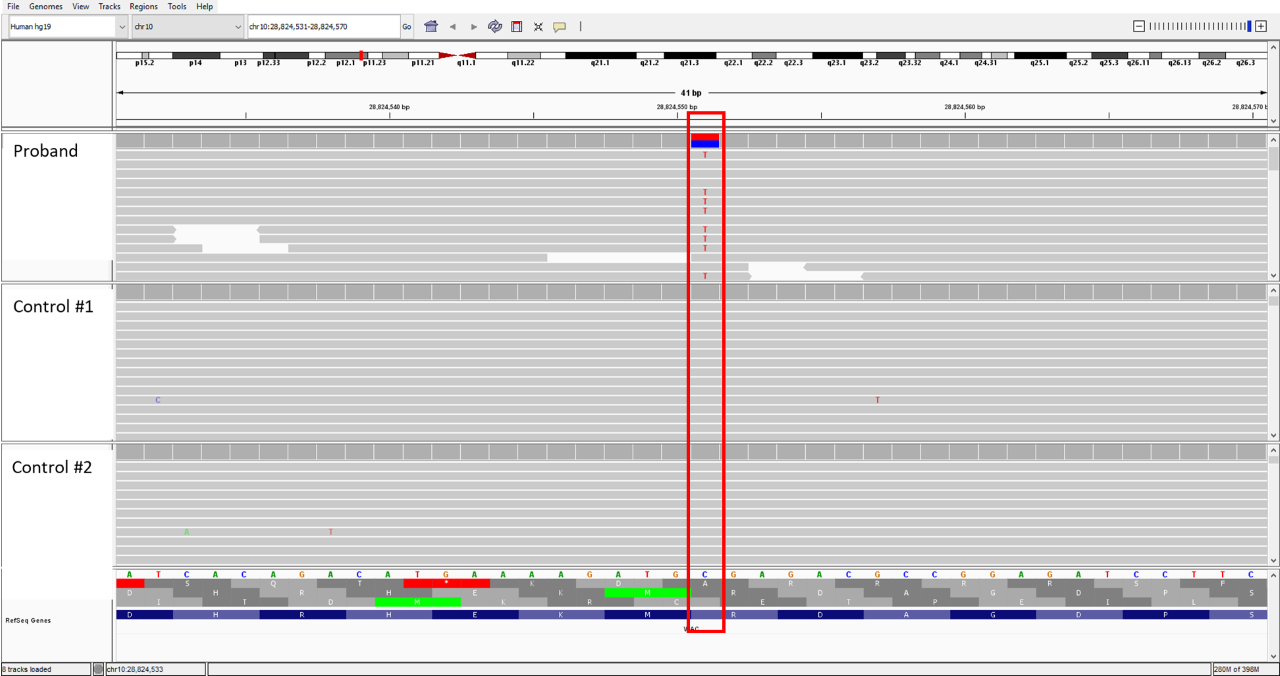- Home
- Resources
- Case Studies
- Rare Disease Day Case 2
Rare Disease Day Case 2
Patient Clinical Information:
The proband is a 44-year-old male with failure to thrive, fine and gross motor delay, speech delay, learning disability, nail dysplasia, hearing loss, chronic diarrhea, headaches/migraines, and muscle weakness.
Family History:
Family history reported to include behavioral disorders, nail dysplasia, diabetes mellitus, hearing loss, and glaucoma.
Testing Ordered:
MNG Exome Proband Only Sequencing
Genetic Findings:
WAC c.139C>T (p.Arg47Ter)
Whole exome sequencing confirmed a heterozygous pathogenic nonsense variant in the WW domain-containing adaptor with coiled-coil region gene, WAC. The variant changes the arginine at amino acid position 47 to a termination codon, which is predicted to cause premature truncation of the protein.
Outcome:
The findings led to a diagnosis of DeSanto-Shinawi syndrome (OMIM: 616708), a rare neurodevelopmental disorder. Clinical features include global developmental delay, behavioral manifestations, hearing loss, ocular abnormalities, gastrointestinal issues, hypotonia, and dysmorphic features.1 DeSanto-Shinawi syndrome has been identified in less than 100 people worldwide.2 For this case, the WES studies were vital to identifying a molecular diagnosis in this adult patient.
For more information on Desanto-Shinawi syndrome, visit https://www.dessh.org/.

Figure 1: The red box in the figure above highlights the nucleotide position where the C>T change was detected in the proband sample in track one. Tracks two and three are control samples, indicating no change in the same position
References
1. DESANTO-SHINAWI SYNDROME; DESSH. OMIM. https://www.omim.org/entry/616708. Published December 22, 2015. Accessed January 26, 2022.
2. About | the DESSH foundation. DESSH Foundation. https://www.dessh.org/about. Accessed January 26, 2022.

